The Roman Agora of Athens (Ρωμαϊκή Αγορά) is one of two Agora archaeological sites in modern Athens. It is far smaller than the site of the Ancient Agora located not too far away, but its inseparability from the history of ancient Athens makes it a must-see to round up any visit to the ancient sites of Athens.
I visited the Roman Agora as part of my winter travels to Athens in the winter of 2022. Here are some impressions of mine.
What was the Roman Agora?
Like the Ancient Agora, the Roman Agora was a central public commercial space serving ancient Athens. It was built in the 1st century B.C during the city’s Roman era, in the form of a large open air courtyard surrounded by a peristyle. During the rule of Roman Emperor Hadrian, the floor of the site was paved over with marble slabs, which surely added to the splendour of the site.
While the Ancient Agora continued to function as a political and socio-cultural centre of ancient Athens, the Roman Agora became largely a commercial hub of the city. The proximity between both sides served to juxtapose the different periods of the ancient city’s history – the Ancient Agora was populated with older buildings from a bygone age, while the newer Roman Agora was a mark of the then current Roman order.
Visiting the Roman Agora
The relatively compact site of the Roman Agora is bounded on the north by Epaminonda Street (Οδος Επαμεινωνδα), on the south by Polignotou Street (Οδος Πολυγνώτου), on the east by Markou Avriliou Street (Οδος Μαρκου Αυρήλιου), and on the west by Dioskouron Street (Οδος Διοσκούρων).
The nearest Metro station is Monastiraki (Μοναστηράκι), a mere 3 minute walk away.
A prominent marker on the site is the imposing ruins of the Gate of Athena Archegetis (Πύλη της Αρχηγέτιδος Αθηνάς), marking the entrance to the site itself. The paved entryway into the site passes just to the side of the Gate, but allows visitors to view the Gate up close.

The site today presents itself as an open area, with a closer look revealing the ruins of the former peristyle along the northern, eastern, and southern corners of the open space.

A walk along the ruins reveal the remains of the colonnades that used to support the roof of the peristyle, creating what we would think of today as a partially open air porch. This was basically similar in form and function to the stoas of Ancient Greece, of which a prominent example can be found at the nearby site of the Ancient Agora.
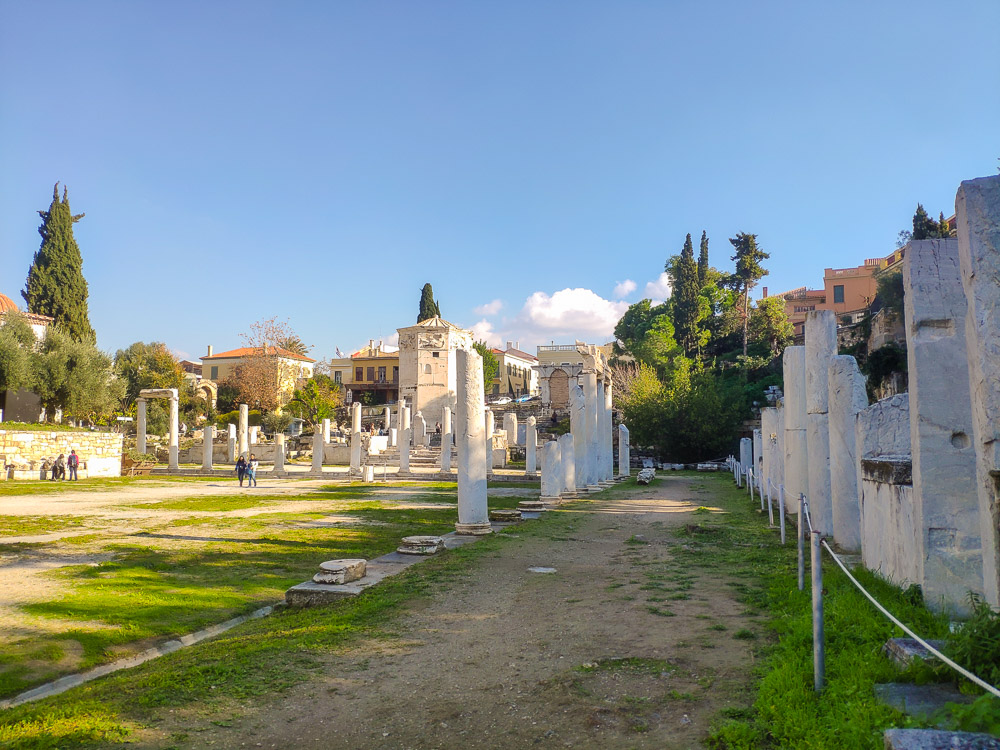
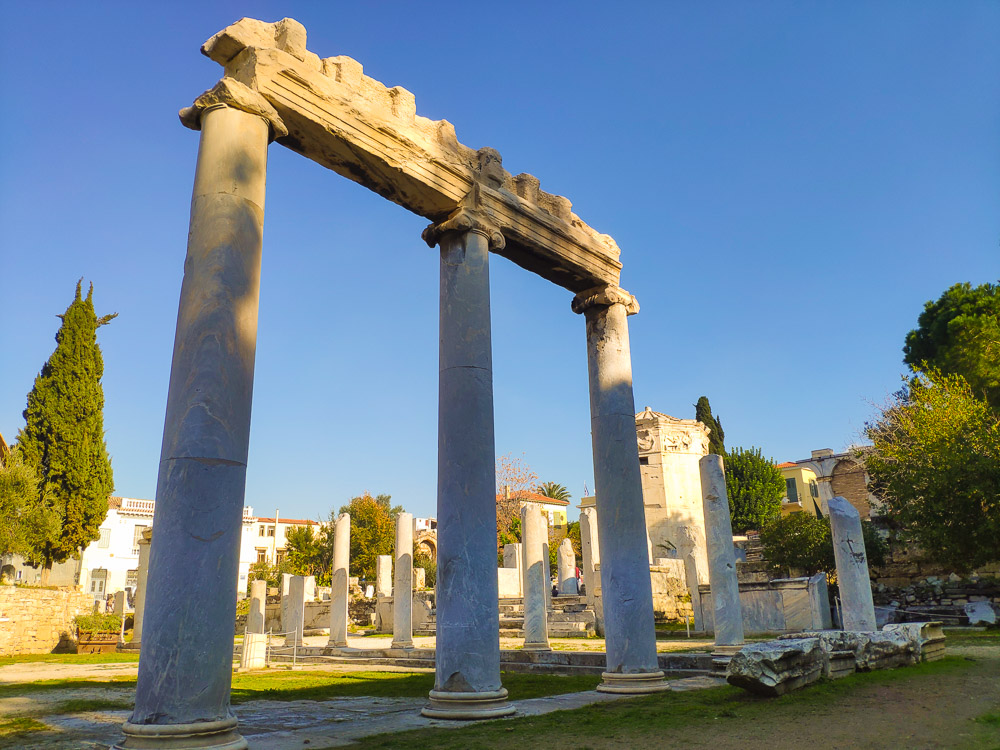
To the east of the site lies the remains of the East Propylon (Ανατολικό Πρόπυλο), the former eastern entrance to the site. Next to it stands the famous “Tower of the Winds” / Horologion of Andronikos Kyrrhestes (Ωρολόγιο του Κυρρήστου), an octagonal tower some 12 metres tall that functioned as a cross between a clock and a meteorological station. Designed around 50 BC by Andronicus of Cyrrhus, an Ancient Greek astronomer, the tower housed a water clock, sundials, with its roof topped by a weather vane to indicate wind direction.
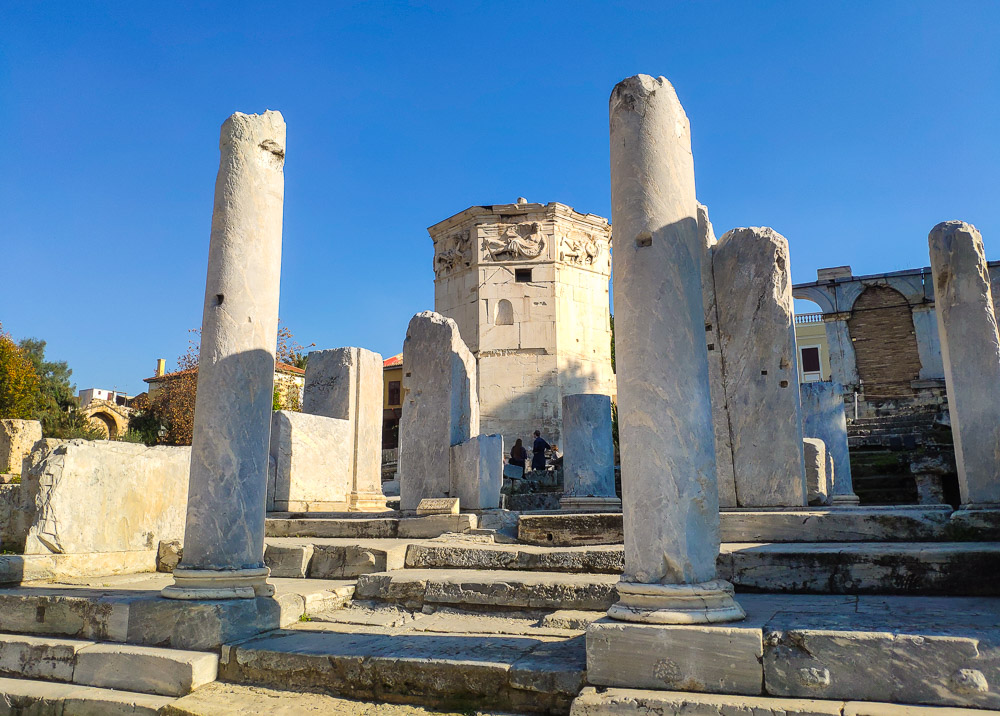
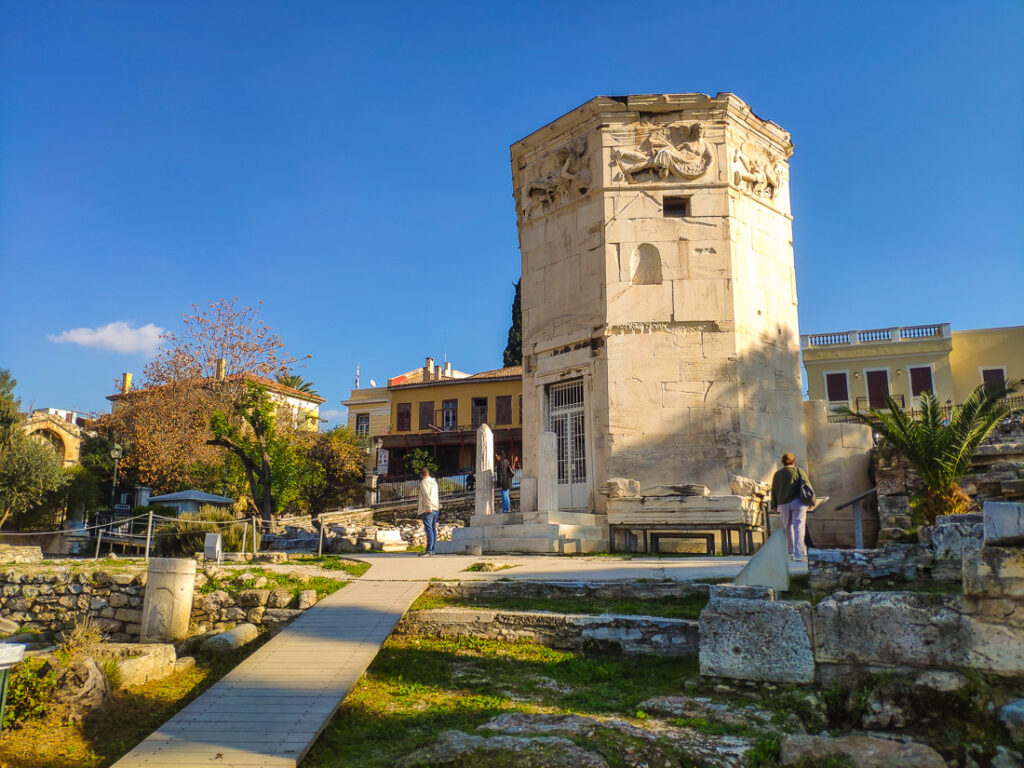
The main doorway of the Tower is locked, but you can still peer at the ancient water clock mechanism through the gaps in the metal bars.
Once you’ve explored the Tower, you have concluded your tour of the Roman Agora. With the small (currently accessible) size of the Roman Agora, a visit can be completed comfortably in 30 minutes, after which you are free to visit the Ancient Agora located nearby.
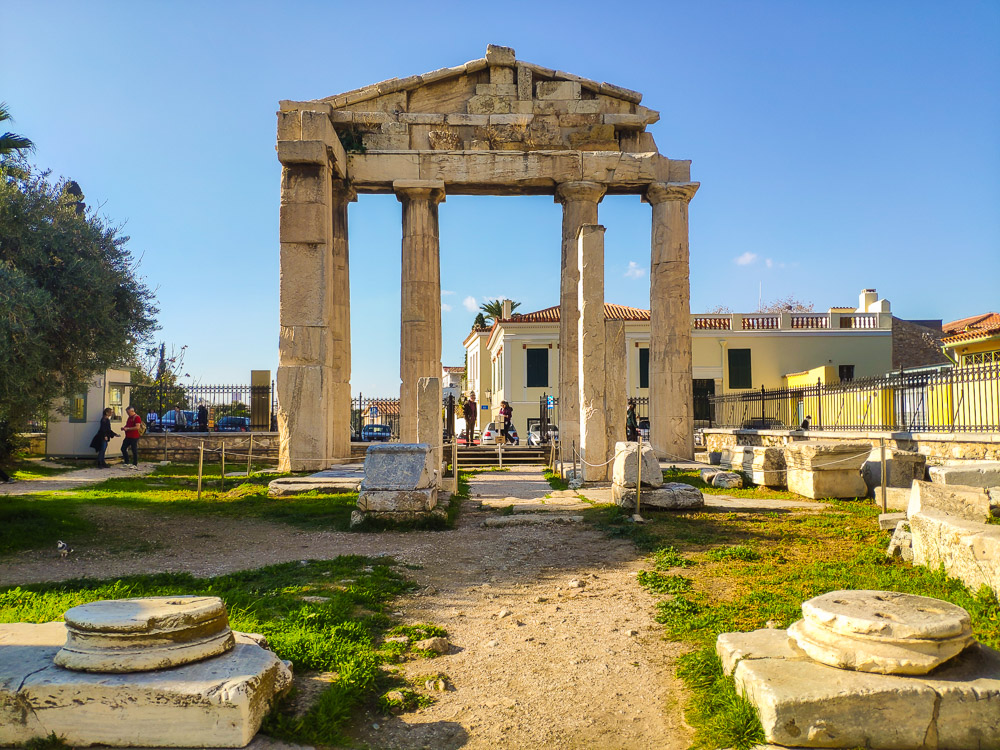
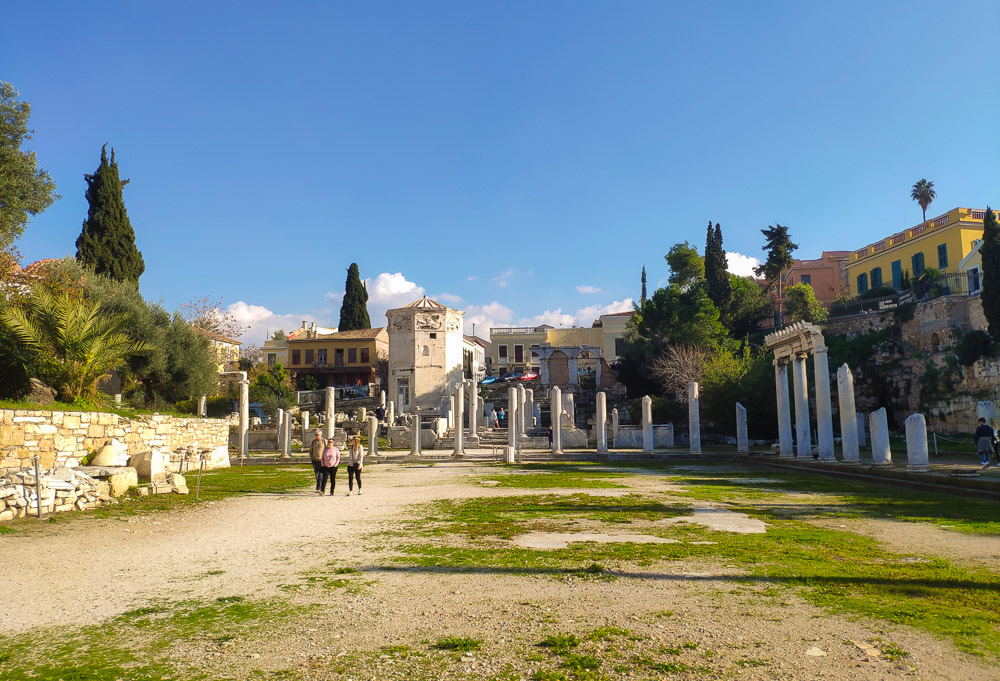
Buying your tickets to the Roman Agora
The ticket office of the Roman Agora is located on Epaminonda Street (Οδος Επαμεινωνδα) just across the site. It can be a bit hard to find on the map, so just copy and paste the following coordinates into Google Maps.
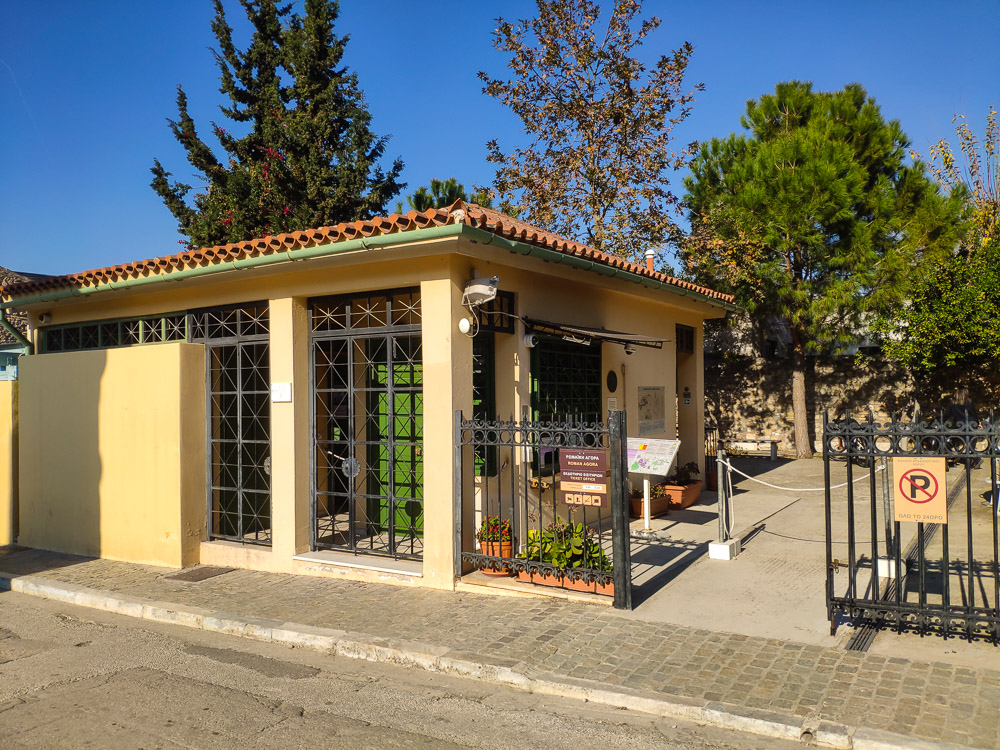
Roman Agora ticket office coordinates: 37.974650, 23.725668
An option is to buy a single ticket for the Roman Agora. A special reduced rate is charged during the Winter months of November to March. The ticket office accepts both cash (Euros only) and card.
| Period | Ticket Cost (€) |
|---|---|
| April to October (Summer) | 8.00 |
| November to March (Winter) | 4.00 |
Alternatively, you could fork out €30.00 for a combined ticket valid for 5 days. This gives you access to 7 sites: The Acropolis, Ancient Agora, Roman Agora, Kerameikos, Hadrian’s Library, Aristotle’s Lykeion, and the Temple of the Olympian Zeus. I personally think this is more useful in the summer months, instead of the winter months with the discounted tickets.
Final Thoughts
The small size of the Roman Agora makes it an easy 30 minutes stop on the way to the more famous Ancient Agora. I do recommend visiting to understand the organic transition from the Ancient Agora to the new Roman Agora during the Roman Era of Athens.
External Links
- Official info page of the Roman Agora on the website of the Greek Ministry of Culture and Sports
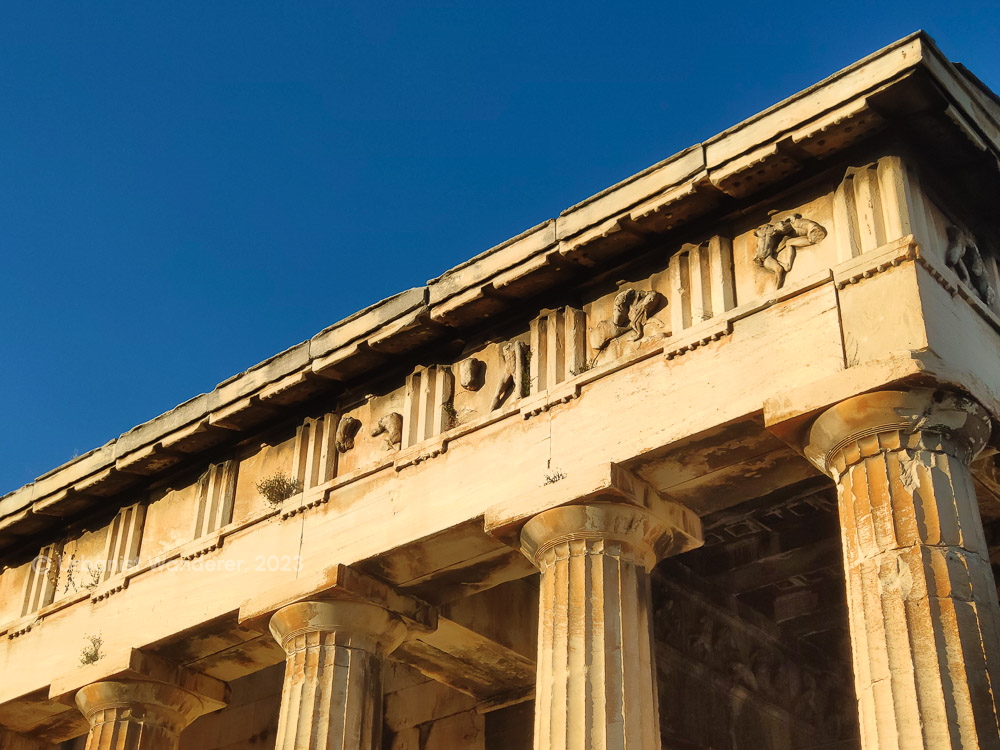

Comments
One response to “Athens in Winter | 30 minutes at the Roman Agora of Athens”
[…] the site of the Agora is much larger than the Roman Agora, much of the structures on-site are in ruins. Most of the historical context is provided by […]